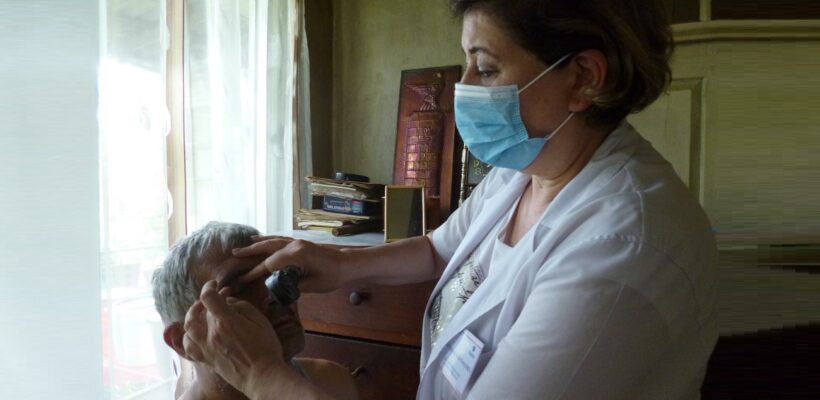
AUA’s Meghrigian Institute Publishes in the Journal of Ophthalmic Epidemiology
2 min readYEREVAN, Armenia — The Garo Meghrigian Institute for Preventive Ophthalmology (Meghrigian Institute) at the Avedisian Onanian Center for Health Services Research and Development (CHSR) of the Gerald & Patricia Turpanjian College of Health Sciences (CHS) of the American University of Armenia (AUA) published a new article titled “Nationwide Rapid Assessment of Avoidable Blindness (RAAB) in Armenia” in the Journal of Ophthalmic Epidemiology, an international, highly regarded peer-reviewed journal that focuses on eye and vision health in the fields of epidemiology, public health, and the prevention of blindness. The study was authored by Naira Khachatryan (MPH ‘97), M.D, DrPH; Aida Giloyan (MPH ’07), M.S.; Ala Paduca, M.D.; Hans Limburg, M.D., Ph.D.; and Varduhi Petrosyan, M.S., Ph.D.
The article is based on an unprecedented study in Armenia that estimates the national prevalence and main causes of blindness and visual impairment in the population aged 50 years and older, using the Rapid Assessment of Avoidable Blindness (RAAB) methodology developed at the International Center for Eye Health, London School of Hygiene & Tropical Medicine. This methodology was first developed by Dr. Hans Limburg, more than twenty years ago and has since been used in over 80 countries worldwide. It provides important data for use by health policy professionals and decision makers in developing appropriate interventions that would improve eye health throughout the country.
The nationwide Armenia RAAB covered all ten marzes and Yerevan, with a sample size of 2,258 participants. The estimated prevalence of bilateral blindness, severe and moderate visual impairment were 1.5%, 1.6%, and 6.6%, respectively. The main causes of blindness included cataract (43.9%) and glaucoma (17.1%). The prevalence of bilateral blindness and functional low vision increased with age and was the highest in participants 80 years and older. The rate of bilateral blindness was comparable with findings from countries with similar conditions confirming that untreated cataract was the main cause of blindness in Armenia. Cataract related blindness is avoidable, suggesting that strategies could be developed to further increase the volume and quality of cataract surgical care to appropriately address this important public health problem in Armenia.
The Meghrigian Institute conducted the nationwide RAAB survey with funding from the Lions Club International Foundation (LCIF).
The AUA Turpanjian College of Health Sciences works actively to improve population health and health services in Armenia and the region through interdisciplinary education and development of health professionals to be leaders in public health, nursing, health services research and evaluation, and health care delivery and management.
